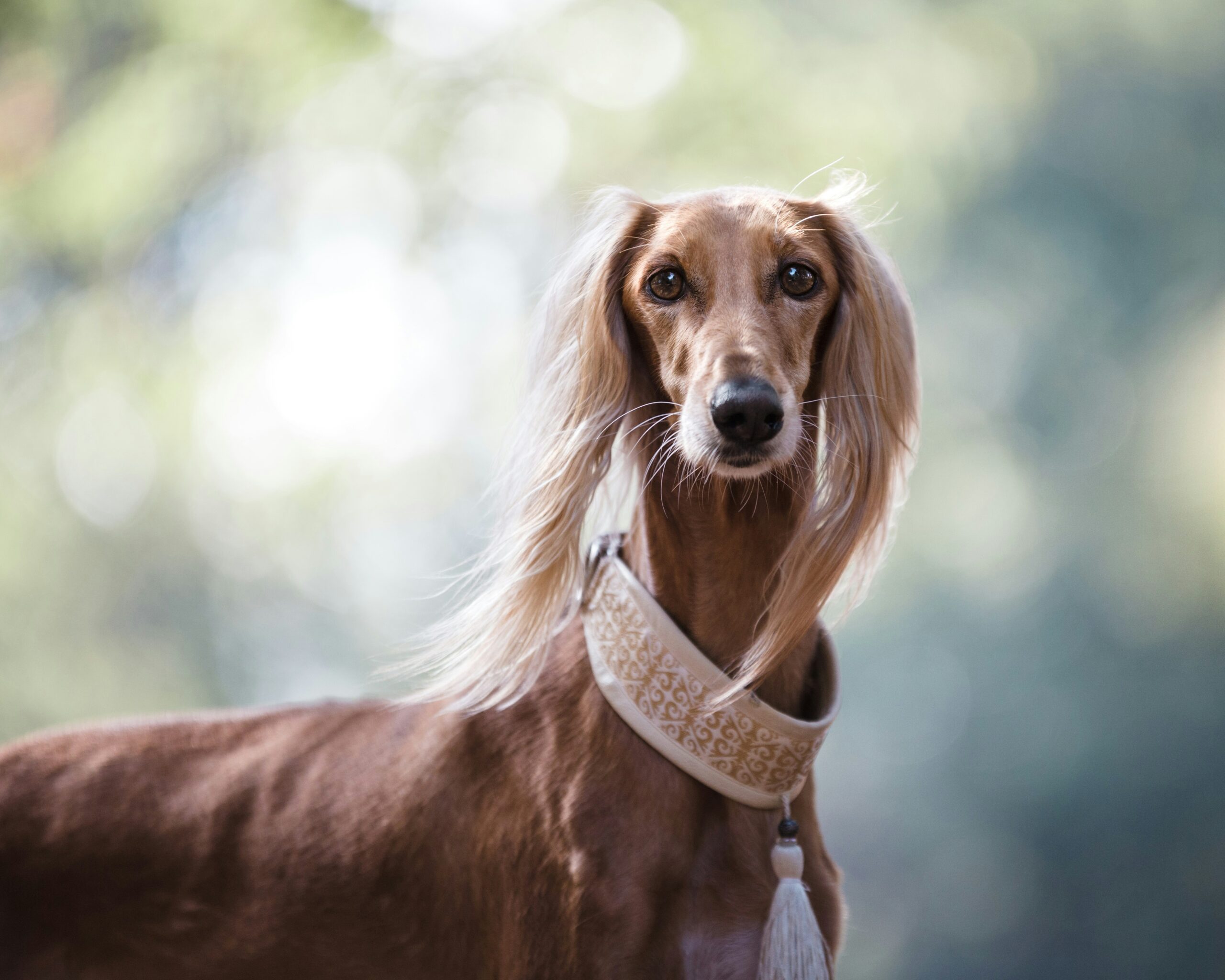Imagine a dog so sleek and swift, it could give the wind a run for its money—a greyhound dog. With a history as rich as its elegant stature, this breed embodies speed, grace, and a heart full of warmth. But don’t let its racing reputation fool you; these gentle giants are perfect for family life, blending effortlessly into cozy homes while being the couch-loving companions you never knew you needed. Whether you’re chasing dreams or just a lazy afternoon, a greyhound will be your stylish sidekick every step of the way.
Overview of the Greyhound Breed
The greyhound dog is truly a marvel of both speed and elegance. Originating thousands of years ago, they served as noble hunting companions and continue to dazzle us with their grace today. With their sleek, aerodynamic bodies and powerful legs, greyhounds can reach speeds of up to 45 miles per hour—yes, that’s faster than most cars in a school zone!
Key Characteristics of Greyhounds:
- Height: Typically 25-30 inches tall.
- Weight: Ranges from 60-70 pounds.
- Lifespan: About 10-14 years.
- Colors: They come in a variety of colors, including fawn, brindle, and black.
These dogs aren’t just fast; they’re also known for their gentle and loving nature. Greyhounds possess a calm demeanor that makes them ideal family pets. They may look like racing machines, but don’t be fooled—they enjoy lounging just as much as running!
So, if you’re considering adding a furry friend to the family, a greyhound dog might just be the perfect match for you!
Historical Significance of Greyhounds
Ah, the greyhound dog—often regarded as the aristocrat of the canine world. With a history steeped in nobility, these graceful athletes trace their lineage back over 4,000 years. Here’s what makes their past fascinating:
- Royal Associations: Greyhounds once hunted alongside kings and queens, revered for their speed and elegance. Ancient Egyptians depicted them in art, showcasing their importance in society.
- Hunting Companions: Originally bred for hunting game, the greyhound dog excelled in coursing. Their keen eyesight and rapid acceleration made them formidable hunters.
- Cultural Icons: Throughout history, greyhounds have graced literature, art, and mythology. From Greek mythology to modern-day novels, they symbolize loyalty and grace.
In comparison with other dog breeds:
| Breed | Origin Year | Primary Purpose | Speed |
|---|---|---|---|
| Greyhound | 4000 BC | Hunting | Up to 45 mph |
| Labrador | 19th Century | Companion & Work | Up to 30 mph |
| Beagle | 5th Century | Hunting | Up to 20 mph |
The greyhound dog’s rich history highlights not just their remarkable abilities, but also their cherished role in human companionship. This timeless bond continues, as greyhounds gracefully transition from hunting royalty to beloved family members.
Physical Characteristics and Appearance
When it comes to style and grace, the greyhound dog simply struts ahead of the pack! This breed is renowned for its sleek, aerodynamic shape, which isn’t just for show – it’s designed for speed. Let’s break down some of its standout features:
- Height: Typically, a greyhound dog stands between 28 to 30 inches tall. That’s tall enough to see over the kitchen counter – ideal for sneaky snack theft!
- Weight: On average, these graceful canines weigh around 60 to 70 pounds, making them surprisingly lightweight for their size.
- Coat: Their short, smooth fur comes in various colors and patterns, from sleek blacks to fancy fawns. Who knew fashion could be so furry?
- Build: With long legs and a deep chest, the body of greyhound dogs is built for lightning-fast sprints rather than cumbersome lumbering. Think of them as the Ferrari of the dog world!
In a nutshell, if you’re hunting for a dog that combines elegance with speed, the greyhound dog checks all the boxes! Plus, they might just make your couch the most stylish spot in the house.
Temperament and Behavioral Traits
When it comes to temperament, the greyhound dog strikes a delightful balance between elegance and playfulness. Surprisingly gentle for their size, these dogs often embody the spirit of couch potatoes with bursts of speedy excitement. Here’s a snapshot of the greyhound’s charming personality:
- Affectionate: Greyhounds love cuddling on the couch with their humans, making them excellent companions.
- Lazy Yet Energetic: They may lounge around for hours, but they can also switch to ‘zoom mode’ at a moment’s notice!
- Easygoing: These dogs tend to get along well with other pets and family members, thanks to their calm demeanor.
In a nutshell:
| Trait | Description |
|---|---|
| Affectionate | Loves snuggles and family time |
| Energetic | Ready for a sprint or a nap! |
| Easygoing | Social butterflies at heart |
Don’t underestimate the grace of the greyhound dog. Their unique temperament makes them a superb addition to any household, blending well into both lively and quiet environments. So, grab a comfy blanket and prepare for some quality snuggle time with your new best friend!
Training and Socialization Tips
Training a greyhound dog can feel like a walk in the park—if that park is filled with sunshine and squirrels, that is! These elegant hounds are intelligent and eager to please, making them generally easy to train. Here are some tips to set you up for success:
- Start Early: Socialization is crucial. Introduce your greyhound puppy to various environments, people, and other animals. The more experiences, the merrier!
- Positive Reinforcement: Reward your greyhound dog with treats, praise, and playtime. Doggie bribery works wonders!
- Short Sessions: Keep training sessions brief, about 5-10 minutes. Greyhounds have short attention spans, and boredom is not your friend.
- Consistency is Key: Use the same commands and signals. This clarity helps your greyhound dog understand what you want.
- Leash Training: With their speed, greyhounds need proper leash training. Use a well-fitting harness to avoid unnecessary escapades after that unsuspecting squirrel.
Remember, patience and love go a long way. Your greyhound will reward your efforts with loyalty and grace in no time!
Greyhounds and Family Life
Bringing a greyhound dog into your home can be a game-changer for family dynamics! These elegant canines, often mistaken for racehorses on a short day, possess not only beauty but an amiable disposition that harmonizes perfectly with family life. Here’s how:
- Gentle Giants: Despite their speed, greyhound dogs boast a remarkably gentle temperament. They tend to get along splendidly with kids and can adapt to various family situations.
- Social Butterflies: Greyhounds thrive on companionship. Their innate desire to be around people makes them excellent cuddle buddies after an exhilarating run.
- Low Maintenance: Compared to other breeds, greyhounds require minimal grooming. This means less time sweeping up fur and more time enjoying family activities!
Comparison Table: Greyhound Dog vs. Other Family Breeds
| Aspect | Greyhound Dog | Golden Retriever | Beagle |
|---|---|---|---|
| Energy Level | Moderate | High | Moderate |
| Grooming Needs | Low | Moderate | Low |
| Kid-Friendly | Yes | Yes | Yes |
| Trainability | Moderate | High | Moderate |
So, if you’re looking for a low-maintenance, loving, and elegant addition to the family, consider welcoming a greyhound dog into your home!
Adopting a Greyhound: What to Know
Thinking about adding a greyhound dog to your family? Kudos to you for choosing such a graceful companion! However, before you speed into adoption, consider these crucial points:
- Temperament: Greyhounds are gentle giants. Their calm disposition makes them wonderful for families with kids or other pets.
- Space: Although greyhounds are known for their speed, they are surprisingly couch potatoes. A comfy spot to nap is their idea of paradise, but they still need a decent-sized living area to stretch out.
- Exercise Needs: Daily walks and occasional sprints will keep your greyhound dog fit and happy. Yet, they don’t require hours of vigorous exercise; a good run once in a while works wonders!
- Health Costs: These dogs are generally healthy, but regular vet check-ups and a solid diet are vital. Budget for both routine care and the occasional surprise.
- Adoption Benefits: Consider adopting from a rescue. Not only do you save a life, but you’ll also find a dog that’s likely already been socialized and trained, ready to enrich your family life.
By understanding these aspects, you set the stage for a harmonious life with your elegant greyhound dog!
Adopting a Greyhound: What to Know
Thinking about welcoming a greyhound dog into your home? Fantastic choice! These elegant athletes make for wonderful companions. However, there are some pawsitive points to consider:
- Space Requirements: Despite their racing background, greyhounds don’t need acres of space to thrive. A comfy corner in your living room can be their happy hunting ground!
- Gentle Giants: Greyhounds are surprisingly low-energy. After a bout of zoomies, they’ll be perfectly content lounging on the couch or snoozing in their bed.
- Furnature and Decor: Keep your possessions safe! Greyhounds can knock over fragile items in their excitement — think of them as graceful, yet slightly clumsy dancers.
- Socialization: Early exposure to various environments, people, and other pets ensures your greyhound dog turns into a well-rounded family member.
- Adoption Agencies: Reach out to reputable greyhound rescue or adoption organizations. They’ll guide you through the process and may provide history on your future furry friend.
So, are you ready to open your heart (and home) to a charming greyhound dog? They promise to bring elegance and a dash of joy to your life! 🐾
The Joy of Living with a Greyhound Dog
Welcome to the whimsical world of greyhound dogs, where speed meets snuggles! These elegant athletes are not just champions on the racetrack; they also excel in bringing joy to your home. Here’s why sharing your life with a greyhound dog is a delightful experience:
- Affectionate Nature: Greyhounds are surprisingly cuddly. Prepare for a snuggle showdown, as they love to cozy up on the couch.
- Low Energy Indoors: Despite their racing prowess, greyhounds are masters of leisure. A few zoomies in the yard and then it’s time for a nap (or two).
- Gentle Giants: Their calm demeanor makes them great companions for children and seniors alike. Greyhounds are often referred to as the “gentle giants” of the dog world.
- Unique Personalities: Each greyhound dog brings its own quirks. Get ready for some entertaining (and sometimes endearing) antics!
In summary, living with a greyhound dog means embracing elegance, speedy shenanigans, and endless snuggles. Who knew that a graceful racer could be the perfect addition to your family? Seriously, what’s not to love?
The Joy of Living with a Greyhound Dog
Living with a greyhound dog is like having a gentle breeze prance through your home. They bring joy and a sprinkle of elegance into everyday life. Let’s bones about some delightful aspects of sharing your space with this graceful breed:
- Affectionate Companions: Greyhounds bond easily with their families. They thrive on love and cuddles, turning your sofa into their personal throne.
- Laid-Back Attitude: Forget the hyperactive furballs! Greyhounds are often described as “couch potatoes.” They relish lazy afternoons just as much as sprinting in the park.
- Low Grooming Needs: With their short coats, these dogs require minimal grooming. Less time brushing means more time for bonding.
- Quiet Demeanor: They rarely bark and generally keep their cool, making them excellent companions for apartments or quieter households.
- Adaptable Nature: Whether you live in a mansion or a tiny studio, a greyhound dog will happily adapt to your lifestyle.
In short, adopting a greyhound dog is inviting a blend of grace, charm, and companionship into your life—what’s not to love?
Frequently Asked Questions
What makes the Greyhound a unique breed among dogs?
The Greyhound is like the Usain Bolt of the canine world – sleek, swift, and undeniably stylish! This breed boasts unparalleled speed due to its aerodynamic build and long legs, making it the fastest dog on the planet, capable of reaching speeds up to 45 miles per hour! But don’t let that athleticism fool you; Greyhounds are also gentle giants at heart, known for their calm demeanor and affectionate nature, which makes them a fantastic addition to any family.
Are Greyhounds suitable for family life?
Absolutely! Greyhounds are the epitome of family-friendly dogs. Despite their racing background, they are surprisingly couch potatoes, preferring to lounge and snuggle with their humans rather than sprint around all day. Their gentle temperament and affectionate nature make them great companions for children and families of all sizes. Just ensure you give them a comfy spot on the sofa – they’ve earned it after all that running!
How much exercise do Greyhounds need?
This may come as a shock, but Greyhounds actually don’t need as much exercise as you might think! While they are sprinters by nature, a couple of short walks and a good sprint in the yard a few times a week will keep them happy and healthy. If you have a secure yard or access to a dog park, let them show off their speed occasionally – just beware of jealous onlookers who might wish they could run like a Greyhound!
Is grooming a Greyhound a lot of work?
Preparation for the grooming of a Greyhound will leave you grinning like a Cheshire cat! With their short, smooth coats, they require minimal grooming – a weekly brush to remove loose hair and a bath every once in a blue moon if they decide to roll in something icky. Their low-maintenance grooming routine means less time spent scrubbing and more time spent admiring their elegant stature and charm!



